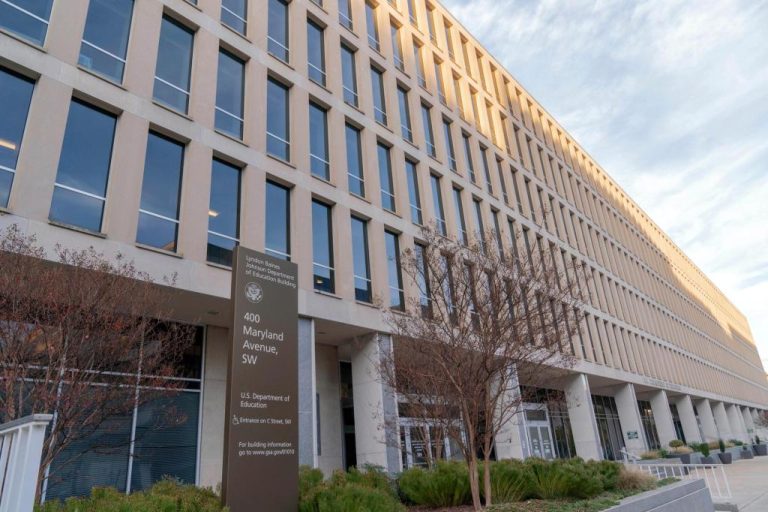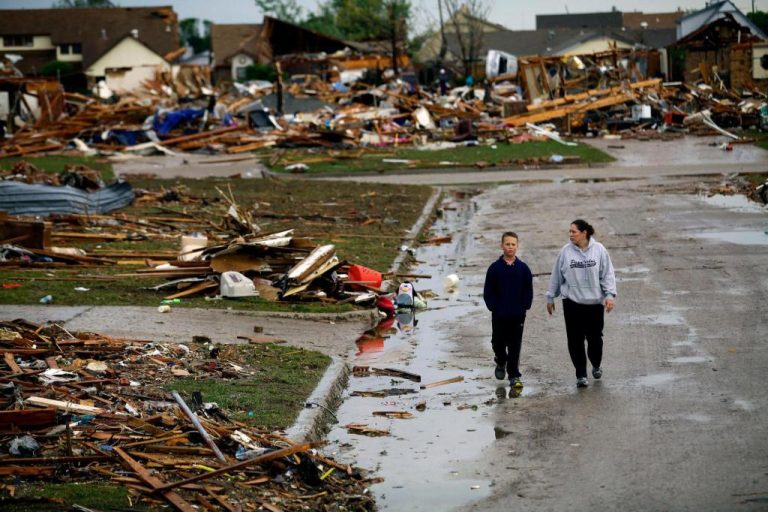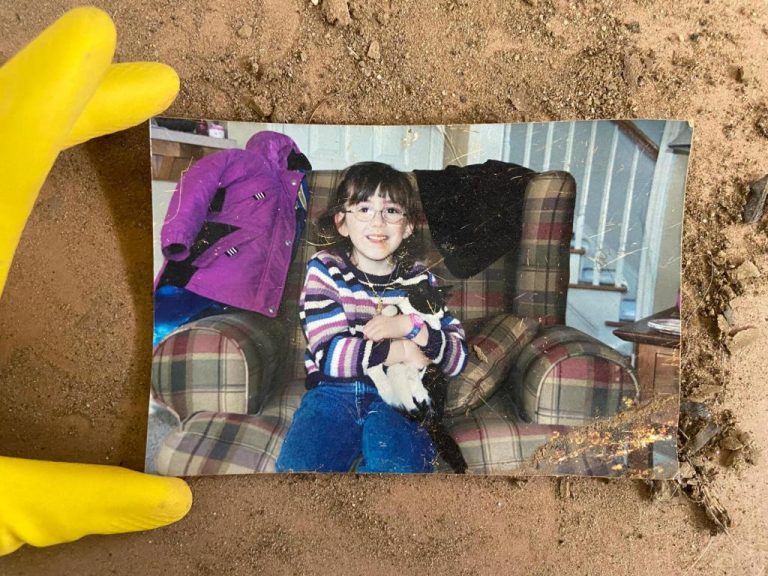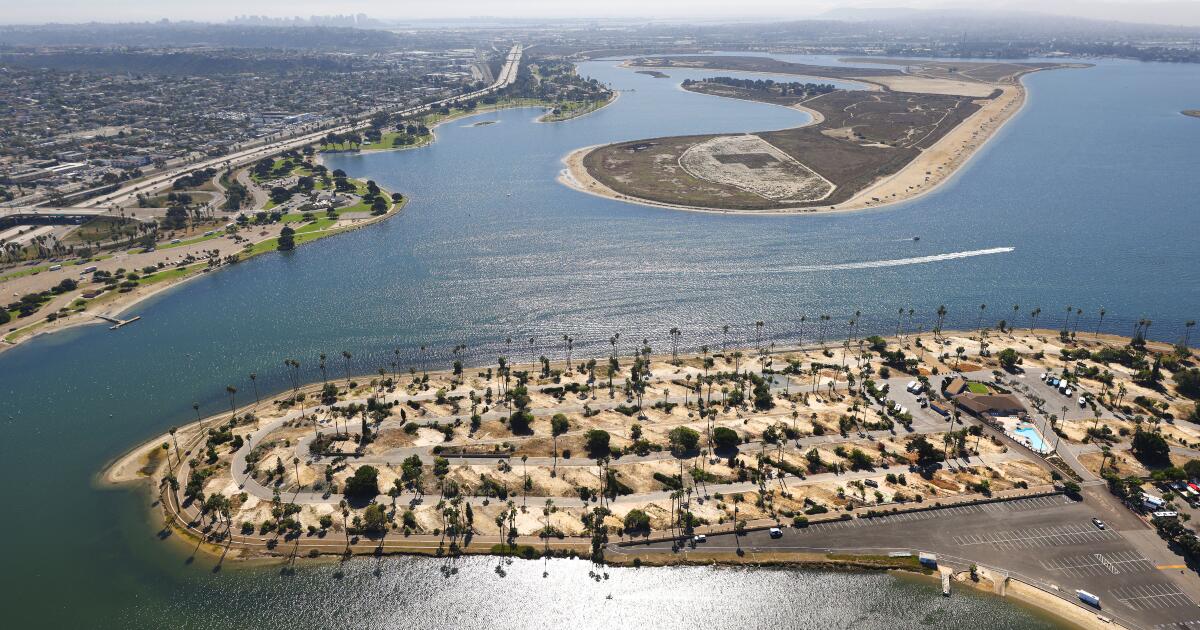
Plans to transform much of northeast Mission Bay into climate-friendly marshland took a key step forward Thursday when the San Diego Planning Commission approved a comprehensive proposal to redevelop the area.
Commissioners called the proposal a solid compromise between environmentalists, supporters of camping and advocates for recreational activities like golf, tennis, softball, soccer and water skiing.
Those groups have been lobbying city officials for seven years — since the closure of a mobile home park prompted San Diego to explore how to revamp 505 acres of land and water in Mission Bay’s northeastern corner.
Thursday’s approval sends the proposal to the City Council’s Environment Committee for a hearing early next year. That could be followed shortly by approval from the full City Council, officials said.
Tripling the marshland in the area from 82 acres to 262 acres would come mostly at the expense of camping, which would shrink from 62 acres to 49 acres and from 970 campsites to roughly 500.
Recreation space would grow slightly from 60 to 66 acres, allowing two more courts for tennis and pickleball and enlarging some playing fields to regulation size.
But space for golf would shrink by a couple acres, potentially reducing the number of holes at Mission Bay Golf Course below 18. High school golf advocates said that could make the course ineligible to host their matches.
The area would also have less open space for picnics and other non-organized activities, because the proposal would reduce passive parkland to a little more than a quarter of its current acreage, from 89 acres to 23 acres.
Commissioners, who approved the proposal unanimously, praised it for respecting existing activities while aggressively addressing climate change and sea-level rise with expanded marshland.
“There is no agreement that can really happen or a compromise that’s going to make everybody happy, but a compromise does have to occur,” said commission chairman Bill Hofman. “It’s give and take on both sides.”
Commissioner Matthew Boomhower said divvying up scarce resources is always tough.
“We’re trying to fit 6 pounds of flour in a 5-pound bag,” he said.
Commissioner Ken Malbrough said he couldn’t imagine any attempts to make things better that wouldn’t simultaneously upset someone.
“I don’t know how you can do it any better without taking away from another entity,” he said.
Thursday’s approval came despite opposition during the four-hour Planning Commission hearing from an odd alliance of environmentalists, camping advocates and leaders of the city’s Parks and Recreation Board.
The groups went beyond lobbying for more acreage and each urged city officials to delay approval to allow more analysis of how the plan would impact water quality and city economics.
Environmentalists and members of the parks board said the city hasn’t properly studied how the new marshland would change over time as sea levels rise.
They also lobbied for more analysis of how the new marshland would take carbon out of the air and how all of the proposed changes would affect water quality and hydrology.
Camping advocates said city officials should study how to fund parks upgrades and maintenance that are now covered by $5 million in rent Campland pays each year.
Craig Kessler, a spokesperson for the Southern California Golf Association, requested the city hire a golf course architect to determine whether the proposal would require eliminating of golf holes.
City planning officials said such studies aren’t appropriate at this time because the proposal is more of a high-level, conceptual document. Those studies will happen when specific projects within the proposal come forward, they said.
Hofman agreed with staff that those studies can happen later.
“I don’t see this as needed for this higher-level planning document,” he said. “This is a concept land-use plan, and really, there wouldn’t be that much benefit.”
And the changes envisioned by the proposal are likely many years away, said Kelly Stanco, the city’s deputy director of environmental policy and public spaces.
After City Council approval, the California Coastal Commission is expected to take roughly a year reviewing and potentially tweaking the proposal, she said.
Then the city would need to create designs for individual projects, secure grants and other funding sources and get approval from federal, state and regional regulatory agencies.
“Given the scale of the envisioned improvements, it’s highly likely the development will be phased over many years,” Stanco said. “It would be quite a few years, I think, before we see construction actually breaking ground.”
Boomhower said city officials can smooth that process and keep more control of it by staying in close touch with regulatory agencies.
“My concern would be making sure we’re continuing to work with all these other agencies so we don’t implement something at the city level that gets completely changed,” he said. “If we know where those pinch points are, we’ve got a much better chance of maintaining local control over what we want and balancing all of these interests.”
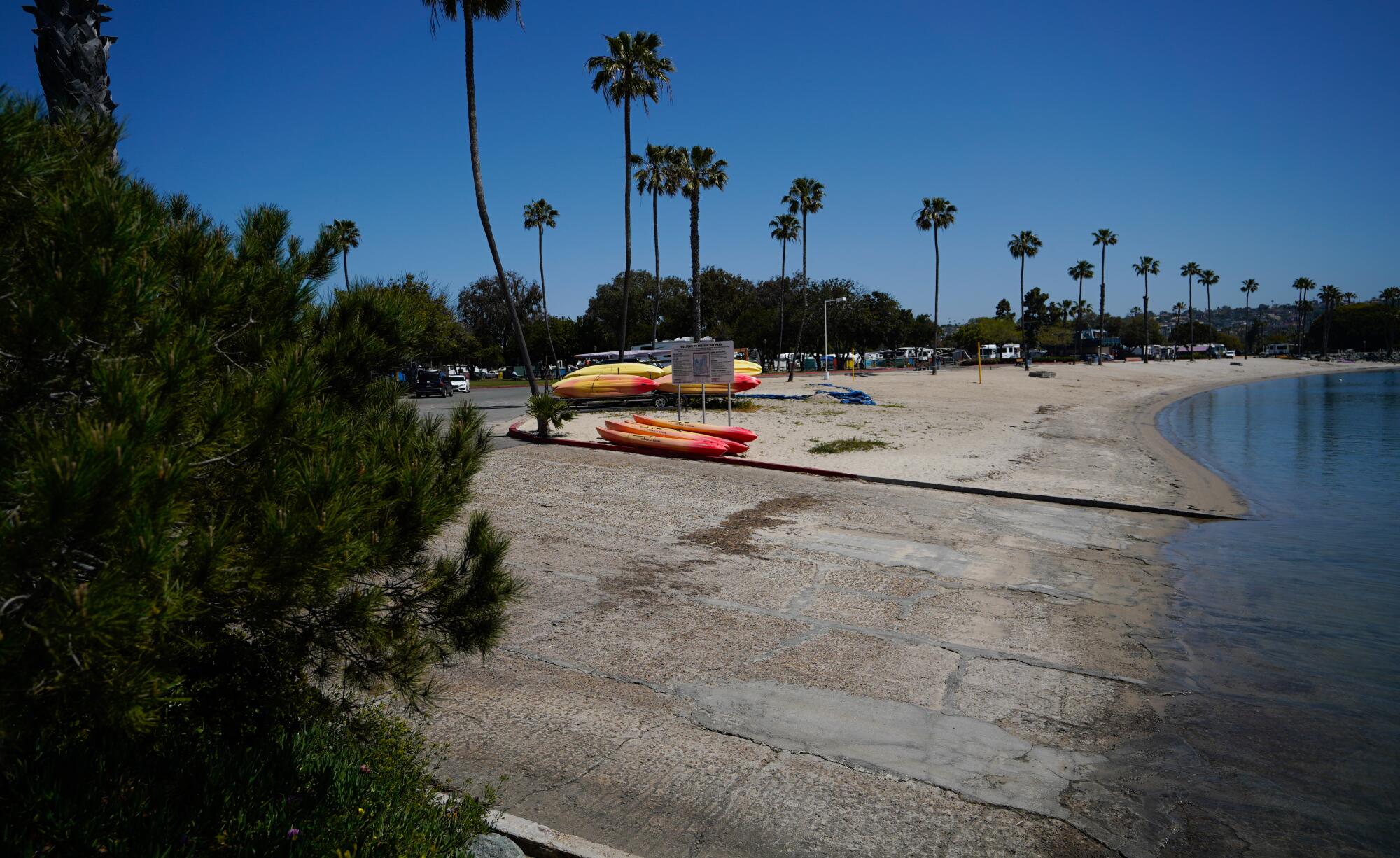
The boat ramp at Campland on the Bay on Thursday, April 20, 2023. Camping space would be reduced under the city’s new plan for Mission Bay.
(Alejandro Tamayo/The San Diego Union-Tribune)
Campers were the most vocal opponents Thursday. One advocate likened the city’s plan to tearing down the Hotel del Coronado and replacing it with marshland.
And Jacob Gelfand, whose family owns the Campland on the Bay RV park that the proposal would eliminate, said it’s frustrating that camping will be so adversely affected, despite being listed as the highest priority in surveys of local residents.
“For families on a budget, this is the only game in town,” said Gelfand, noting that nightly campsite rentals remain less than $70.
But Gelfand also praised the city proposal, somewhat.
“It’s the plan that does the best to balance recreation, economics and environment,” he said.
Andrew Meyer, leader of a group of environmentalists called ReWild Mission Bay, said his group wants 315 acres of marshland instead of 262 acres because Mission Bay presents a unique opportunity.
“There is no other opportunity for the city to go negative and actually sequester carbon,” he said.
Meyer also said the potential loss of recreation uses should be viewed in context of the entirety of Mission Bay Park, which is dominated by recreation.
“We are well on the way towards a very good plan, but we’re not there yet,” Meyer said.
The city recently completed a study showing that at least 80 acres of marshland in Mission Bay would remain above sea level in the year 2100.
Commissioners added one amendment to their approval to urge city officials to work out medium-term leases with recreational users that would be displaced by the proposal, but not for several years.
Leaders of the affected organizations said being on month-to-month leases during this planning process has made it harder to hire and make strategic investments in renovations and upgrades.
For details, visit the proposal’s website.



